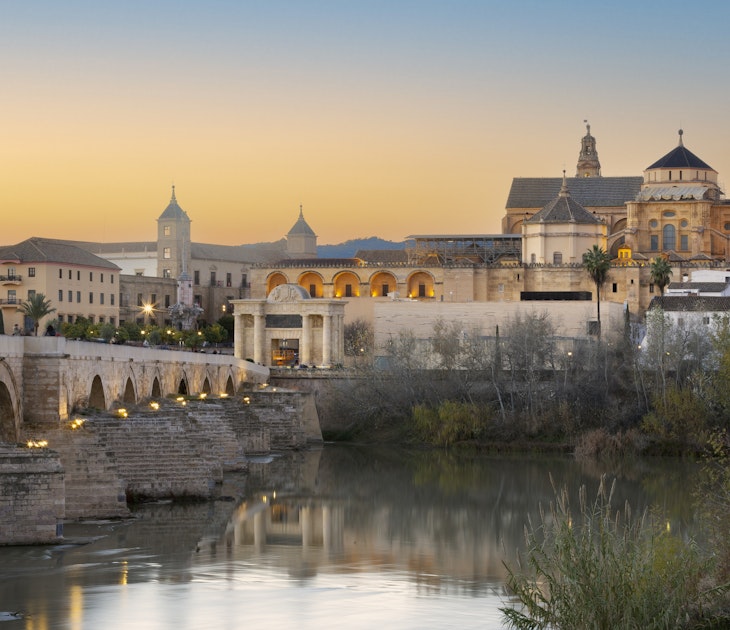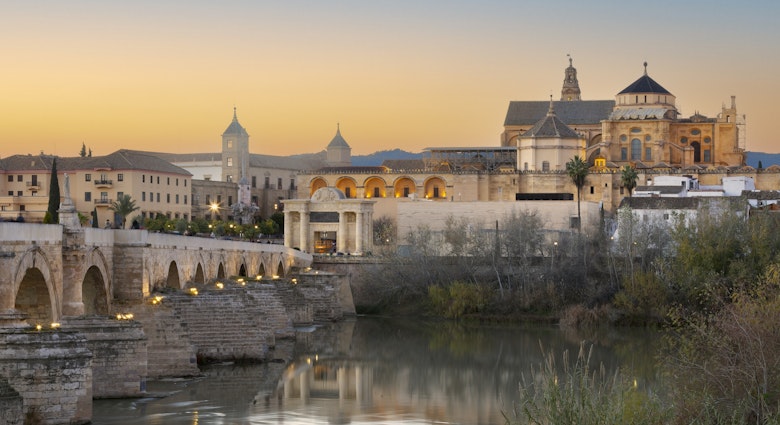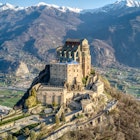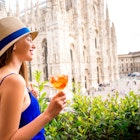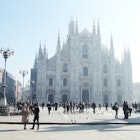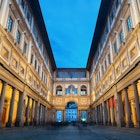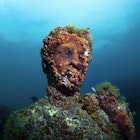Italy hosts such a rich variety of historical art pieces it is almost overwhelming to the novice art-appreciator.
You can see many of Italian art’s greatest hits in a single day if you want to shuffle along behind everyone else at the Vatican, but this is a recipe for Stendhal syndrome: an arguably psychosomatic but nonetheless debilitating malady, caused by exposing oneself to a large amount of sublime art all in one place.
For a more leisurely wander, the ideal spot to begin is Pompeii, where the Ancient Roman city’s ruined homes are dotted with frescoes (many of them decidedly bawdy), offering insight into the central place art played in the lives of ordinary people.
Image by laura padgett
The next stop is Padua, whose Scrovegni Chapel shows Giotto’s genius at work, labouring to unlock the secret of naturalistic painting and perfect perspective. Giotto’s frescoes of the lives of Jesus and his mother were completed in 1305, and his painterly innovations, which drew on the realism and solidity of classical sculpture, paved the way for the great painters of the Renaissance.
Italian art’s greatest moment was the Renaissance, and its nerve centre was Florence. The city’s upper-class had money to burn, splurging loads of it on art. The Medici family, who ran Europe’s largest bank, were patrons to some of the greatest Renaissance artists, including Leonardo, Brunelleschi, Botticelli and Michelangelo - all of them Tuscan artists who built their careers in Florence. Their works and those of their contemporaries are dotted all over the city: Michelangelo’s David fixes his steely gaze (and displays his perfect six-pack) in the Accademia; Donatello’s wood-carved Magdalene weeps in the Cathedral Museum; Leonardo’s Gabriel brings Mary the big news; Artemisia Gentileschi’s Judith hacks the head off Holofernes; Botticelli’s Venus emerges from the sea foam in the Uffizi Galleries; and Brunelleschi’s dome towers over the lot.
Like Florence, Rome is a work of art in itself. The wanderer stumbles upon a mind-boggling Bernini at every turn, Caravaggio’s pieces hang about nonchalantly in unpretentious little churches and Michelangelo’s great dome of St Peter’s watches over the whole head-spinning collection.
Art-lovers who want to escape the mega-crowds of the Vatican and Colosseum should head to the Capitoline Museums. Start with a wander through Michelangelo’s magnificently harmonious Piazza del Campidoglio before moving indoors. Here you’ll find the Etruscan sculpture of Romulus and Remus, the mythical founders of Rome, suckling at the bronze she-wolf; countless classical masterpieces of unknown authorship like Cupid and Psyche; and in the courtyard, monumental marble feet and hands that hint at the grandeur of Ancient Rome.
Rome’s Renaissance treasures are in the Vatican Museums, which involves ducking and weaving among organised tour groups, resisting the urge to pause in the galleries and map halls, and heading straight to the Raphael Rooms before moving on to Michelangelo’s masterpiece: the Sistine Chapel. The two artists were at work at the same time, and legend has it Raphael honours his rival by painting Michelangelo’s figure - in his own mannerist style - in the foreground of The School of Athens.
Rome really came into its own with the Baroque, the Catholic Church’s great frothy counter-attack on the Reformation’s pared-down aesthetic. Bernini and Caravaggio are Baroque’s greats, and you don’t even have to buy a museum ticket or stand in line to see their best work. Bernini’s glorious sculptures grace the Piazza Navona, St Paul’s Basilica and Piazza di Spagna, just to name a few. But one of his most intimate works is the Ecstasy of St Teresa, which you can visit at the church of Santa Maria della Vittoria.
Image by hslo
Caravaggio’s realist masterpieces are scattered around town. You can design your own walking tour to take in the churches of San Luigi dei Francesi (The Martyrdom of Saint Matthew and The Calling of Saint Matthew), Santa Maria del Popolo (The Conversion of St Paul and The Crucifixion of St Peter), and, loveliest of all, Sant’Agostino, where you’ll find his Madonna di Loreto. Caravaggio’s gruesome version of Judith Beheading Holofernes is in Rome’s Galleria Nazionale d'Arte Antica, while at the wonderful Galleria Borghese you can gaze at his luminous portrait of St Jerome before catching Bernini’s Daphne at the very moment she is transformed into a tree.
So you've got the insider knowledge on Italian art - now what? For rolling Umbrian countryside, lip-smacking Sicilian cuisine and a host of other delights, Lonely Planet's Italy travel guide has all the best tips and inspiration.




